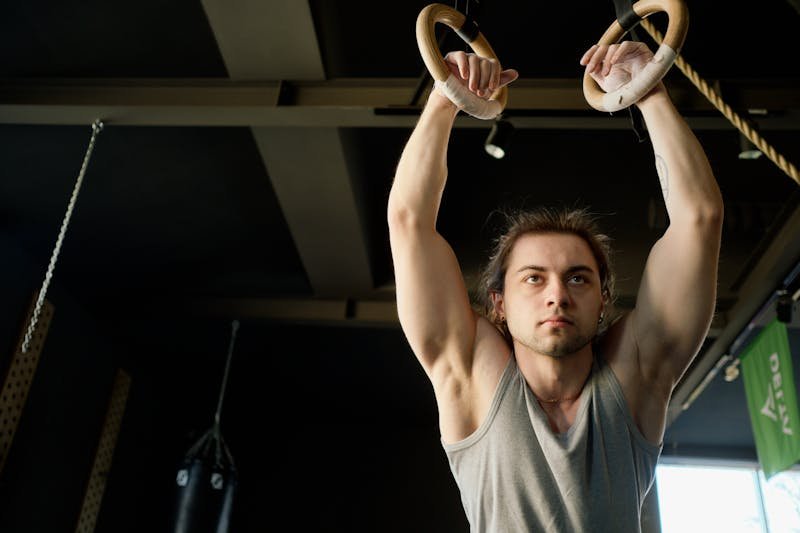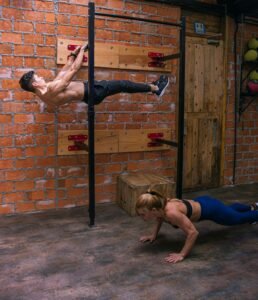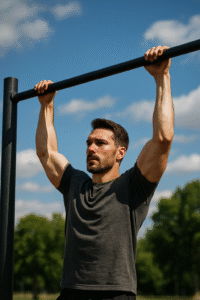Last Updated on October 1, 2025 by shawnshealth
Discover how to unlock your full calisthenic strength potential with these three powerful routines. Perfect for building unstoppable power and achieving your fitness goals.
Introduction To Calisthenics Strength:
Are you ready to transform your calisthenic strength and elevate your fitness game? Calisthenics, the art of using your body weight for resistance, offers an incredible way to build raw power and muscular endurance. In this guide, we’ll dive into three potent calisthenics routines designed to unleash your maximum strength. Whether you’re a beginner or an advanced athlete, these workouts will challenge your limits and help you achieve new levels of physical prowess. Let’s get started on your journey to unstoppable power!
📘Want to train smarter from day one? The Ultimate Calisthenics FAQ
covers technique, progression, and common mistakes to help you build strength safely.
How does calisthenics develop true strength?
- Uses full body tension and control
- Engages stabilizer and core muscles
- Builds functional, real-world power
- Enhances joint health and mobility
- Increases strength-to-weight ratio
What’s the smartest way to begin calisthenics strength training?
- Start with foundational movement patterns
- Prioritize proper technique over speed
- Train consistently with progressive difficulty
- Focus on body alignment and control
- Allow time for recovery and adaptation
How can advanced athletes continue to unlock calisthenics strength?
- Introduce explosive and balance-based variations
- Increase time-under-tension and complexity
- Train skill-specific movement patterns
- Cycle intensity to avoid plateaus
- Refine precision, not just power
🧠For a deeper dive into foundational movement patters, check out Beginner Calisthenics Strength Routine for step-by-step guidance.
🛒 Quick Tip: Looking for fitness gear? Browse top-rated equipment on Amazon to power up your workouts fast 💪
As an Amazon Associate, I earn from qualifying purchases. This means I may receive a commission if you purchase through links on this site, at no extra cost to you.
🎥 New to calisthenics? This video from Saturno Movement breaks down 3 essential beginner skills with clear demonstrations and progression tips. It’s a great visual companion to help you build strength, control, and confidence from day one.
Table of Contents
Medical Disclaimer: This content is for informational purposes only. Consult a healthcare professional before making any health or fitness changes.
Amazon Affiliate Disclaimer: As an Amazon Associate, I earn from qualifying purchases.
Beginner Calisthenics Strength Routine
Embarking on a calisthenics strength journey is an excellent way to build strength, flexibility, and overall fitness. For beginners, it’s crucial to start with a routine that not only lays a solid foundation but also prepares the body for more advanced movements. This routine focuses on fundamental exercises that enhance calisthenic strength while ensuring safety and gradual progress.
My Experience
I have worked in the area of Calisthenics and Bodyweight Fitness for many years and, looking back, I have learned from many mistakes that I hope you don’t have to make.
Make sure to align your goals with your behavior. Example: If you want to do 100 pushups in a row then why are you doing 6 super slow reps? If you want to be able to do a one-arm pull-up then why are you only doing push-ups? You get the picture. Train for your goals.
Always place consistency over intensity. Let’s compare: one person does a 16-hour workout once a month. the other person does one hour for 4 days each week for 12 weeks. Who do you think will make the most progress? Obviously, the person who sticks with a consistent and regular workout. Consistency is king!
Take your time. What’s your hurry? Where do you want to be in 1, 5, or 10 years? Take your time, be consistent (see above) and just put in the work. You will get so much farther this way than if you do everything at 100 mph only to get burned out, unmotivated, and injured. So take as much time as you need. Focus on making a bit of progress each workout (another rep, better form, better focus, etc).
It doesn’t matter what shape you are in right now; you can always improve! Set your goals, match your actions to those goals, be consistent, and take your time.
Happy Training!
Importance of Advancing Slowly (Beginner)
Advancing slowly in your calisthenics strength journey is vital for several reasons. First, it allows your muscles, tendons, and joints to adapt to the new demands placed on them. Sudden increases in intensity or complexity can lead to injuries, which can derail your progress and enthusiasm. Secondly, mastering the basics ensures that you build a solid foundation, making advanced exercises more effective and safer. Lastly, gradual progression keeps you motivated, as you can see and feel your improvements over time, fostering a sustainable and enjoyable fitness routine.
Beginner Calisthenics Moves
1. Push-Ups:
Push-ups are a fundamental exercise that targets the chest, shoulders, triceps, and core. Start with the standard push-up and aim for 3 sets of 8-12 repetitions. If standard push-ups are too challenging, begin with knee push-ups or incline push-ups against a bench or wall.
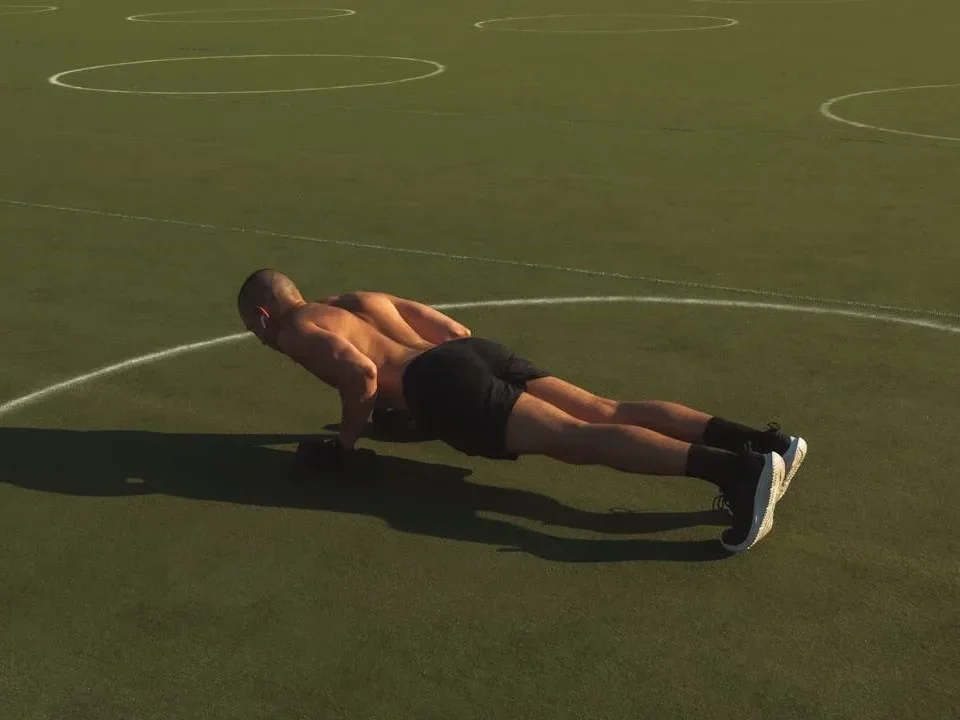
2. Bodyweight Squats:
Squats are excellent for building strength in the legs and glutes. Ensure your feet are shoulder-width apart, keep your back straight, and lower your body until your thighs are parallel to the ground. Aim for 3 sets of 15-20 repetitions.
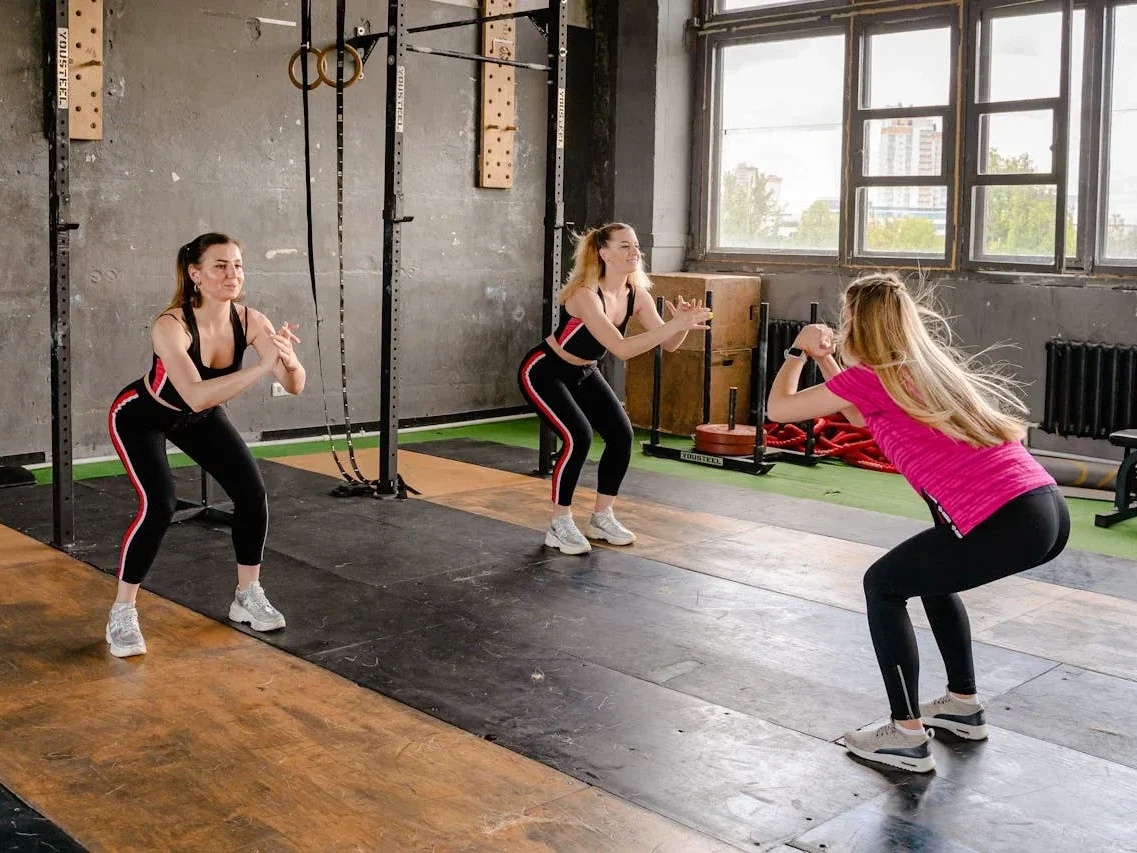
3. Plank:
The plank is a fantastic core-strengthening exercise. Hold a plank position with your forearms on the ground and your body in a straight line from head to heels. Start with 3 sets of 20-30 seconds and gradually increase the duration as you get stronger.

4. Inverted Rows:
Inverted rows target the back and biceps. Use a sturdy bar or a suspension trainer for this exercise. Lie underneath the bar, grip it with an overhand grip, and pull your chest towards the bar. Aim for 3 sets of 8-12 repetitions.

5. Glute Bridges:
Glute bridges are excellent for strengthening the glutes and lower back. Lie on your back with your knees bent and feet flat on the ground. Lift your hips towards the ceiling, squeezing your glutes at the top. Aim for 3 sets of 15-20 repetitions.
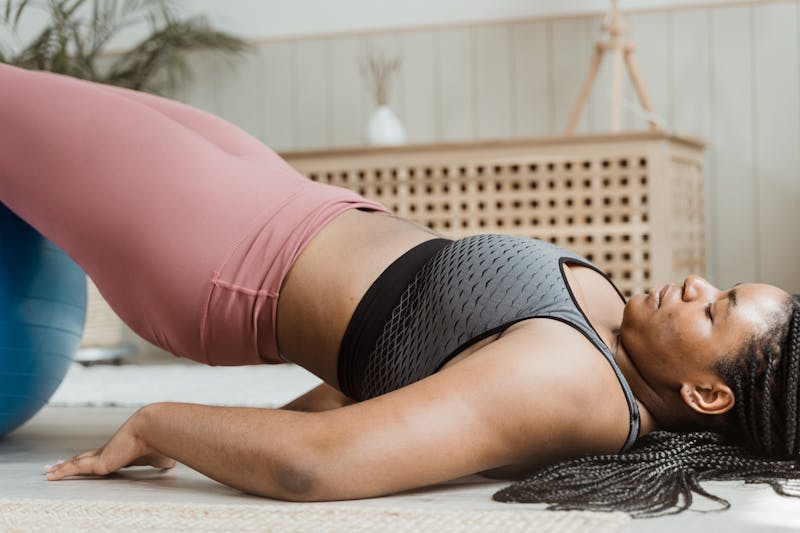
By following this beginner routine and advancing slowly, you’ll build a solid foundation of calisthenic strength. Patience and consistency will lead to significant improvements, preparing you for more advanced calisthenics exercises in the future.

In the next sections, we will explore intermediate and advanced calisthenics strength routines to further enhance your strength and take your fitness to the next level. Stay tuned!
🔍Want to dive deeper into the benefits of calisthenics? Explore this expert-backed guide from Verywell Health to learn how bodyweight training improves strength, mobility, and overall fitness—whether you’re working out at home or on the go.
Intermediate Calisthenics Strength Routine
Once you’ve built a solid foundation with beginner exercises, it’s time to take your calisthenics strength journey to the next level. The intermediate routine introduces more challenging movements that will further develop your strength, stability, and endurance. This section focuses on exercises that build upon the basics, incorporating increased complexity and intensity to help you continue progressing.
Importance of Advancing Slowly (Intermediate)
Even at the intermediate level, it’s crucial to advance slowly and methodically. This approach allows your body to adapt and strengthens your muscles, tendons, and ligaments, minimizing the risk of injury. Gradual progression ensures that you master each exercise with proper form, enhancing the effectiveness of your workouts and preventing burnout. Patience and consistency are key to achieving long-term calisthenic strength.
Intermediate Calisthenics Strength Routine
1. Diamond Push-Ups:
Diamond push-ups target the chest, triceps, and shoulders more intensely than standard push-ups. Position your hands close together under your chest, forming a diamond shape with your fingers. Lower your body until your chest touches your hands, then push back up. Aim for 3 sets of 8-12 repetitions.
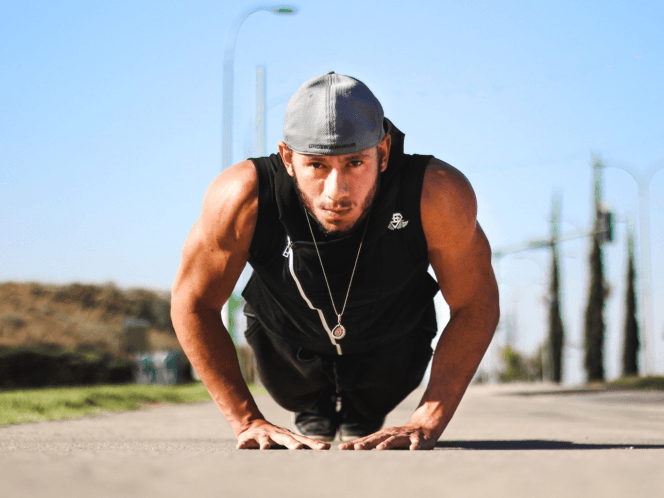
2. Bulgarian Split Squats:
This single-leg exercise enhances leg strength and balance. Stand a few feet in front of a bench or elevated surface, place one foot behind you on the bench, and lower your body until your front thigh is parallel to the ground. Perform 3 sets of 10-12 repetitions per leg.

3. Hanging Leg Raises:
Hanging leg raises are excellent for core strength and stability. Hang from a pull-up bar with an overhand grip, then raise your legs to a 90-degree angle with your body. Aim for 3 sets of 10-15 repetitions.

4. Dips:
Dips target the chest, triceps, and shoulders. Use parallel bars or a sturdy surface, lower your body until your elbows are at a 90-degree angle, then push back up. Perform 3 sets of 8-12 repetitions.

5. Pike Push-Ups:
Pike push-ups focus on the shoulders and upper chest. Position yourself in a downward dog pose with your hips raised high, then lower your head towards the ground and push back up. Aim for 3 sets of 8-12 repetitions.
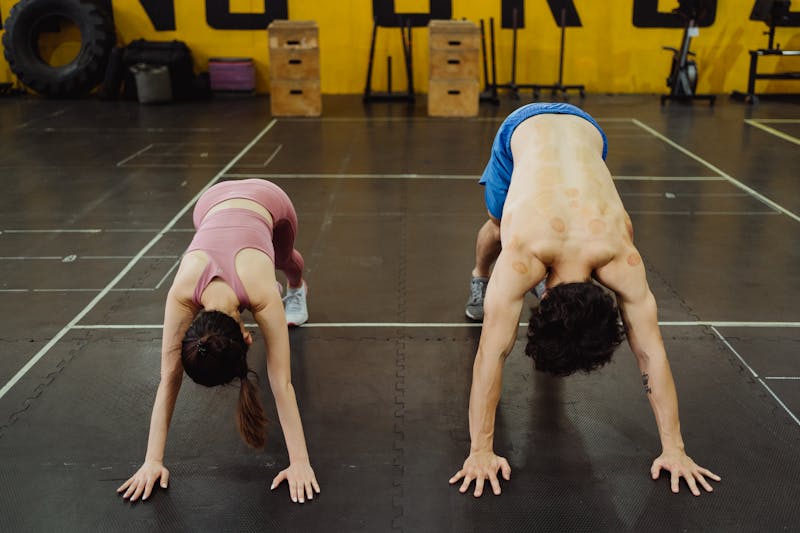
By following this intermediate routine and advancing slowly, you’ll continue to build impressive calisthenic strength. Remember, the journey is just as important as the destination. Stay patient, stay consistent, and enjoy the process.

In the next section, we’ll delve into advanced calisthenics routines to further challenge your strength and take your fitness to new heights. Stay tuned!
Advanced Calisthenics Strength Routine
Reaching the advanced stage of calisthenics is a testament to your dedication and hard work. At this level, the exercises become more complex, requiring greater strength, balance, and control. This advanced routine is designed to push your limits and help you achieve peak calisthenic strength. As always, advancing slowly and methodically is crucial to avoid injuries and ensure sustained progress.
🏋️♂️💪 Curious how calisthenics stacks up against traditional weightlifting? Check out my full comparison: Weightlifting vs Calisthenics 2025 – Which Is Best for You?
Importance of Advancing Slowly (Advanced)
Even as an advanced athlete, it’s essential to advance slowly and thoughtfully. Advanced calisthenics exercises place significant stress on your muscles, joints, and tendons. Rushing into new movements without adequate preparation can lead to serious injuries. Gradual progression allows your body to adapt to increased demands, ensuring long-term success and preventing setbacks. Moreover, mastering advanced exercises with proper form maximizes their effectiveness and helps you achieve your strength goals more efficiently.
🧘This principle is also central to our Senior Fitness Principles, which emphasize safe, sustainable progress for all ages
Advanced Calisthenics Strength Routine
1. Muscle-Ups:
Muscle-ups combine a pull-up and a dip into one powerful movement, targeting the upper body. Begin with a pull-up, then transition by pushing your chest above the bar and finishing with a dip. Aim for 3 sets of 5-8 repetitions.

2. Pistol Squats:
Pistol squats are single-leg squats that challenge balance, strength, and flexibility. Stand on one leg, extend the other leg forward, and lower your body into a squat. Aim for 3 sets of 5-10 repetitions per leg.
🦵Want more leg strength options? Leg Exercises Without Weights includes minimalist routines for balance and mobility.

3. Front Lever:
The front lever is a demanding core and upper body exercise. Hang from a pull-up bar, then lift your body into a horizontal position, parallel to the ground. Hold this position for 3 sets of 10-15 seconds.
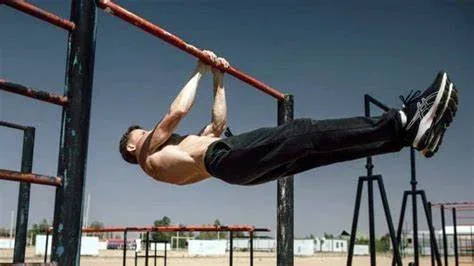
4. Handstand Push-Ups:
Handstand push-ups target the shoulders, triceps, and upper chest. Kick into a handstand against a wall, then lower your head towards the ground and push back up. Perform 3 sets of 5-10 repetitions.
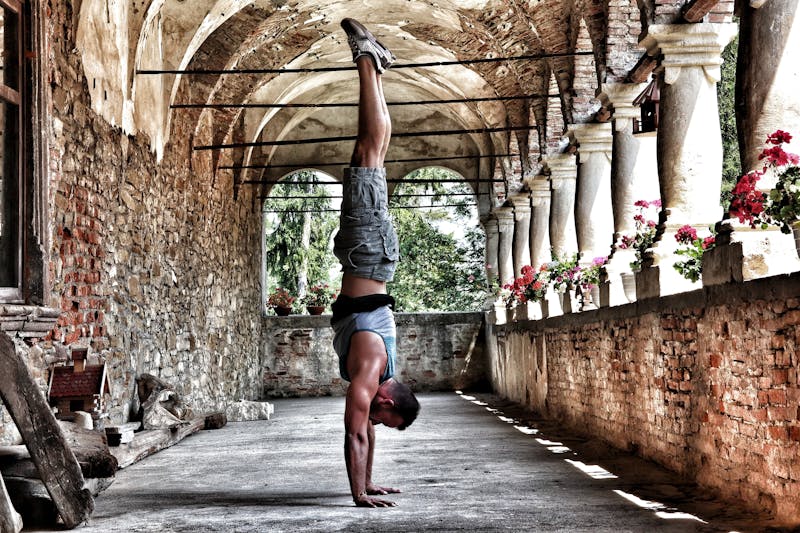
5. Human Flag:
The human flag is a challenging full-body exercise that requires significant strength and control. Grip a vertical pole with both hands, lift your body into a horizontal position, and hold. Aim for 3 sets of 5-10 seconds per side.
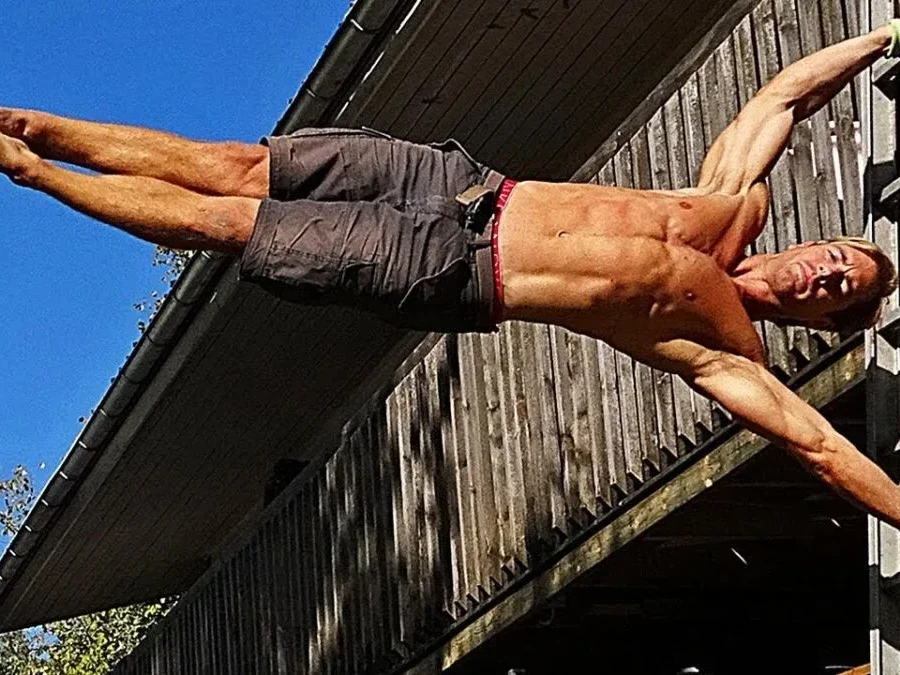
By following this advanced routine and advancing slowly, you’ll continue to build impressive calisthenic strength and master complex movements. Remember, advanced calisthenics is a journey that requires patience, consistency, and dedication. Enjoy the process and celebrate your progress along the way.
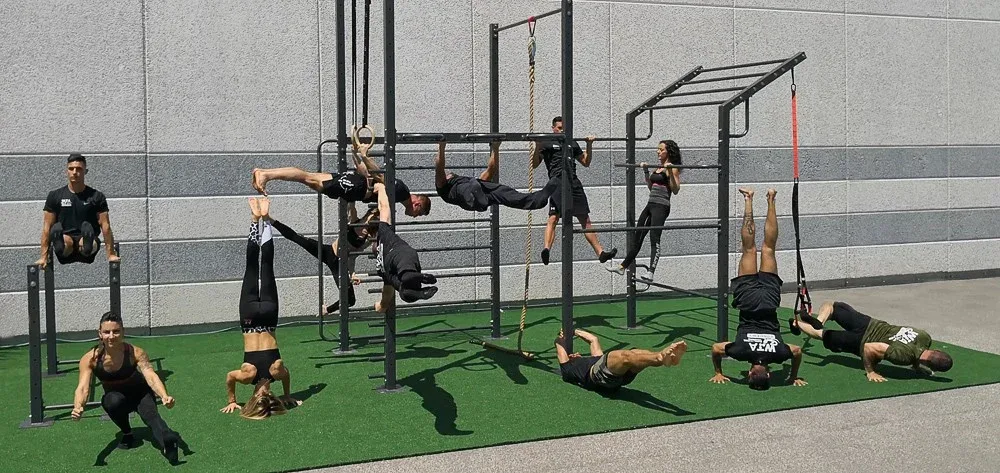
With the completion of this advanced calisthenics strength routine, you now have a comprehensive guide to beginner, intermediate, and advanced calisthenics strength training. Incorporate these routines into your fitness regimen, stay consistent, and watch your strength soar to new heights!
🧠 Tips for Progression
• Consistency is King: Train 3–5× per week and stick to your routine. Progress compounds over time.
• Form First: Perfect technique before increasing reps or complexity. It’s your injury shield and strength amplifier.
• Listen to Your Body: Soreness is normal—pain isn’t. Adjust intensity and rest as needed.
• Level Up Gradually: Increase reps, sets, or difficulty only when you’ve mastered the current level.
• Skill + Strength: Mix in skill work (e.g., handstands, levers) to build control alongside power.
• Recovery Matters: Sleep, nutrition, and rest days are part of the training equation.
• Celebrate Progress: Track small wins—better form, longer holds, cleaner reps. They add up.
🧘♂️ Just starting out or rebuilding strength? My Beginner Calisthenics Strength Routine walks you through foundational moves with safe, scalable progressions.
Drawing Inspiration from the Experts
This advanced routine is inspired by principles from Al Kavadlo’s “Get Strong” program and Coach Paul Wade’s “Convict Conditioning.” Both of these programs emphasize the importance of mastering foundational movements before progressing to more advanced exercises. By following their methodologies and advancing slowly, you’ll continue to build impressive calisthenic strength and master complex movements. Remember, advanced calisthenics is a journey that requires patience, consistency, and dedication. Enjoy the process and celebrate your progress along the way.
🧳For more minimalist training ideas, explore Hotel Workouts designed for strength and staying fit while on the road.
🔥 Gear to Help You Achieve Your Health and Fitness Goals 💪
If you’re looking for tools to enhance your fitness journey, check out this. Explore top-rated fitness gear on Amazon to enhance your workouts. Check out the latest picks here! 🛒 to support your workouts and progress.
🚀 Find equipment designed to boost strength, endurance, and overall performance!
⚠️ Short disclaimer: As an Amazon Associate, I earn from qualifying purchases.
People Also Ask
Is calisthenics effective for building strength?
- Yes, it builds functional, full-body strength
- Enhances control, endurance, and coordination
- Progresses with increasing difficulty over time
How long does it take to see strength gains in calisthenics?
- Initial gains often visible in 4–6 weeks
- Consistency and progression are key
- Results vary based on effort and recovery
Do I need equipment for calisthenics strength training?
- Minimal equipment is needed (e.g., a bar or surface)
- Bodyweight alone can build serious strength
- Advanced variations increase challenge naturally
Can calisthenics replace weight training?
- Yes, for strength, mobility, and endurance
- Uses body mechanics for resistance
- Ideal for joint health and real-world movement
How often should I train calisthenics for strength?
- 3–5 sessions per week recommended
- Include rest days for recovery
- Balance intensity with volume
What’s the biggest mistake in calisthenics training?
- Rushing progression too quickly
- Neglecting form and control
- Ignoring mobility and recovery
Is calisthenics strength training safe for older adults?
- Builds joint-friendly strength and mobility
- Scales to any fitness level
- Encourages consistency over intensity
- Supports long-term health and independence
🧭 Explore More Calisthenics Resources
Ready to keep building strength and refining your skills? These guides offer deeper insights and routines to support your journey:
Beginner Calisthenics Strength Routine
🚀 Ready to Keep Progressing?
If today’s exercises got you moving, there’s even more waiting for you. Dive into The Ultimate Calisthenics FAQ for a complete guide to bodyweight training—covering technique, progression, recovery, and common mistakes.
And if you’re looking for routines designed to support older adults, the Senior Fitness: 15 Essential Principles post offers safe, empowering strategies to help you stay strong, mobile, and confident.
Your next progression starts now.
So do not fear, for I am with you; do not be dismayed, for I am your God. – Isaiah 41:10

